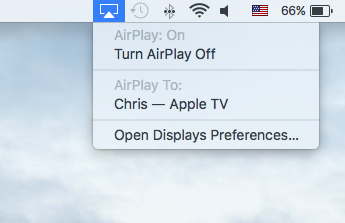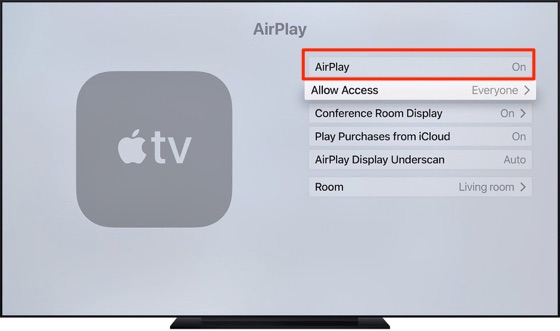What is AirPlay? All Basic Info
If you ever need to mirror your iOS device’s screen, you can use AirPlay. If you are new to it and you have no clue what it is, the following guide should tell you what AirPlay is and how you can use it on your devices.
Screen Mirroring & AirPlay Tips
Screen Mirroring Tips & Apps
iPhone/Android Mirroring
If you have been in the Apple ecosystem for some time, you may have noticed the term AirPlay is thrown around many times. AirPlay is one of the useful features you get on an iOS device and it makes your life easier in many ways. With AirPlay, you can mirror your iPhone screen to Mac or TV via a WiFi connection, making it easy to see your iPhone content on a bigger screen.

What is AirPlay
Not only does AirPlay work on iOS devices but it can be used on desktop computers as well. So as long as you have a modern device and a bit of know-how of tech things, you can get started with this amazing feature offered by Apple.
Also Read: How to Fix Sound Not Working on Airplay >
What is AirPlay
So far you only know the name of the feature, but what is AirPlay, is every iPhone or Mac compatible with this feature? That is exactly what we are going to reveal in this section.
AirPlay is a feature built into the iOS operating system to mirror the contents of your device to an AirPlay receiver. Apple devices including the Apple TV are AirPlay-enabled by default so you can start mirroring your iOS device’s screen to those devices without installing any third-party apps. However, AirPlay does not come up with all Apple devices, if you can’t find the AirPlay feature on your device, check if your iPhone or Mac is compatible with AirPlay or not.
Devices & OS Compatible with AirPlay:
- iPhone, iPad, or iPod touch running iOS 11.4 or later
- Apple TV HD or Apple TV 4K running tvOS 11.4 or later
- HomePod running iOS 11.4 or later
- Mac with iTunes 12.8 or later OR macOS Catalina or later

AirPlay System Requirement
However, if your device does not support AirPlay, you will need to install an app on your device to add AirPlay compatibility. All the Windows machines do not have AirPlay on them and you need to use a third-party app to use the feature on those machines.
How to Turn On/Off AirPlay
Now that it is clear to you what the feature is and briefly what it does on your devices, the next thing you may want to learn is how to use AirPlay. Of course, after knowing what amazing things it does, you will definitely be interested in trying it out on your compatible devices.
Since AirPlay is built into the operating system of your Apple devices, you can open a panel on your devices to toggle the feature on and off. Apple has given users an extremely easy way to enable and disable AirPlay and that is what we are going to show you in the following subsections.
1. How to Turn On/Off AirPlay on iPhone
If there is one device where AirPlay is used the most, it is the iPhone. iPhone gives you a pretty easy method to enable the feature and use it with your other devices. Follow the guide below to see how to enable or disable AirPlay on an iPhone.
Step 1. Open the Settings app on your iPhone and turn on Bluetooth if it is not already.
Step 2. Open Wi-Fi in the Settings app and connect your iPhone to the WiFi network where your AirPlay receiver is connected.
Step 3. Swipe up from the bottom of your iPhone to reveal Control Center. When it is revealed, tap on the option that says AirPlay to enable the feature.

How to Turn On AirPlay
Your iPhone will start casting your screen to your chosen AirPlay receiver and that is how you turn on AirPlay on an iPhone. To turn AirPlay off, simply tap on it in the Control Center and it will be disabled. The steps should work on almost all iPhone models.
2. How to Turn On/Off AirPlay on Mac
One common use scenario of AirPlay is to mirror iPhone to Mac. In this case, you need to make sure the AirPlay is enabled on both iPhone and Mac devices. Turning the AirPlay option on and off on a Mac is also fairly easy. The option to enable and disable the feature is located right in your Mac’s menu bar so locating it should not take too long.
Step 1. On your Mac, head into System Preferences > Displays and checkmark the option that says Show mirroring options in the menu bar when available.
Step 2. You will find a new Airplay icon in your menu bar. Click on it and select Turn Mirroring On to turn AirPlay on your Mac.

Turn On AirPlay on Mac
Your Mac should now be able to receive content from any AirPlay sender device. To turn the feature off, simply click on the feature icon in the menu bar and select Turn Mirroring Off. It will disable the feature on your machine.
3. How to Turn On/Off AirPlay on Apple TV
Toggling the AirPlay option on an Apple TV also only takes a few taps. The following should teach you how you can do it on the Apple TV you have.
Step 1. From the main screen of your Apple TV, choose Settings and open it.
Step 2. When you see the settings options on your screen, select and open AirPlay.
Step 3. Select the AirPlay option and you will be able to enable and disable it depending on its current status.

Turn On AirPlay on Apple TV
How Does AirPlay Work
AirPlay uses wireless technologies on compatible devices to connect one device to another. Then it allows you to stream content from one device to the other. The device that sends content is called the sender and the one that receives content is called the receiver.
Most Apple devices have built-in support for AirPlay so that you can stream your content and screens without the need for any third-party tools. For the devices that do not have AirPlay support, you can fill the gap using third-party apps.
Bonus Tip: An Alternative of AirPlay to Mirror Screen
While AirPlay is a commonly recommended choice for iPhone and Mac users to mirror screens, it is still not a perfect screen mirroring choice. Why? Here are the reasons:
- Ecosystem Limitations: AirPlay is only available for Apple devices. If you’re using an iPhone and a Windows computer, then you can’t use AirPlay to mirror the iPhone screen to the computer.
- Connection Limitations: AirPlay only supports mirror screens via a WiFi connection. It might seem pretty convenient at first, but one major disadvantage of screen mirroring with WiFi is it is more likely to be unstable and causes more lags during screen mirroring.
To overcome the inconvenience of AirPlay and enable users to mirror iPhone to PC, here is an AirPlay alternative – AnyMiro. It is a screen mirroring tool designed for iPhone and Android users to mirror the mobile phone screens to the computer. In other words, with AnyMiro, you can mirror iPhone screen to Windows PC, or mirror Android screen to a Mac computer.
Why Recommend AnyMiro as AirPlay Alternative:
Stable and Smooth Mirroring: AnyMiro enables your iPhone and Android phone to stay connected for 10+ hours with USB 3.0 and AirPlay protocol.
Stunning Visual Quality: With AnyMiro, you can enjoy up to 4K resolution for gaming or art streaming.
Lag-Free Screen Mirroring: With a fast response time within 10 ms, 120Hz refresh rate, and 60fps frame rate, you can enjoy lag-free screen mirroring.
Free Download * 100% Clean & Safe
Download AnyMiro now and try it for free!

Anymiro Official Webpage Interface
The Bottom Line
AirPlay is a useful feature on your Apple devices and it is important that you learn how to use it for various purposes on your devices. We hope the above guide tells you what the feature is and how you can begin using it on your compatible phones and computers.
More Related Articles
Product-related questions? Contact Our Support Team to Get Quick Solution >

